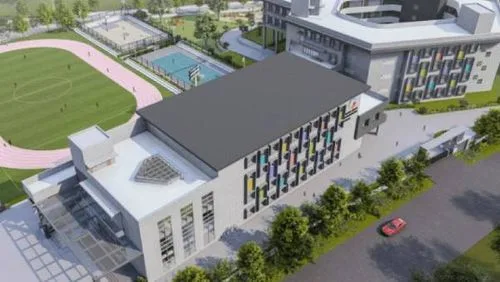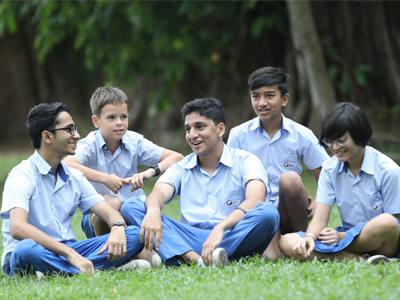Download our FREE Academic Calendar now! 📚 Start your child’s journey to success.
Education systems are generally straightforward, but the jargon they employ can often be confusing. It can be difficult to recall all of the different levels of learning and what they are named.
What makes matters worse are the nomenclatures, which are typically varied and sometimes contradictory in Indian and other educational systems around the world.
It’s difficult to know what a secondary school is when there are so many labels for different aspects of the educational system that seem to differ from country to country.
How do you keep track of which is which when compared between high school, college, preparatory school, and senior secondary school?
First and foremost, regardless of the label (high school or secondary), your degree will indicate the same thing all over the world: you are prepared for the next stage of your life! So, let’s figure out what a secondary school is and how it differs from a high school.
What is the Goal of Secondary Education?
Secondary school is the level of education that follows primary school and precedes higher, optional education. In most countries, a portion of secondary school can be taken as an optional in order to prepare for further education. However, secondary school education is essential for the transfer to high school.
As a result, it is frequently referred to as the intermediate stage, in which children receive intensive instruction in fundamental disciplines such as mathematics, English, science, liberal arts, and languages.
The goal is for students to be able to explore various areas and develop a foundational understanding in order to find interests and competencies.
Secondary education exposes students to a variety of school-based programmes. In Grades 11 and 12, for example, the best CBSE schools in Ahmedabad require students to choose from the Science, Humanities, and Commerce groups, as well as one language.
Secondary school students study these courses in order to make informed decisions about their future studies.
Apart from that, kids gain new sports skills and other talents that help them develop their personalities and acquire skills such as leadership, creativity, self-expression, and community awareness. Secondary school serves as a prerequisite for high school and is an important element of a child’s education.
Simply stated, secondary school does not exist in countries like the United States. Middle school (grades 6-8) and high school (grades 9-12) are technically and by definition part of secondary education because they are offered after elementary school.
Whereas South Africans get their school types all tangled up – secondary school is also known as high school, and college is also known as college! In South Africa, this type of education is for grades 8 to 12, but schooling is only required until grade 10.
High schools, on the other hand, teach students in grades 11 and 12, focusing on key courses and concepts in order to allow them to relate their lessons to real-life circumstances and apply what they’ve learned. It also involves instilling vital values and principles in them that will be important in their later years.
Students also participate in project-based learning, where they apply their analytical and communication skills to achieve success in their studies.
As a result, the best high schools aim to develop students’ personalities and assist them in becoming mature and responsible people.
In the United States, high school consists of grades 9 through 12. It is compulsory to attend school. After attending the best high school, students will attend college, university, join the army, or enter the workforce.
The scenario is very similar in Canada. Grades 9-12 make up secondary school, after which Canadian students attend college or university. In Quebec, however, high school consists of classes 7 through 12.
Is a Secondary School the Same as a High School?
Yes! And, No. Secondary school is described as education after elementary school, so that would be grades 6 through 12 in the United States. Once a student achieves the ninth grade, they are termed a high school student.
However, secondary school in many English-speaking nations is roughly equal to high school in the United States.
Secondary school is the last stage of a student’s education before entering college or university. In certain nations, however, such as South Africa, the Terms College, secondary school, and high school are all used interchangeably.
In Canada, the academic institution that follows elementary school is referred to as “high school.” As an alternate phrase, “secondary school” is also used. After one of the best high schools, students are prepared for post-secondary study, training, or work.
In India, the elementary school’s purpose is to teach students how to learn to merely survive. Secondary education, or high school, aims to prepare students to be fully functioning members of society.
They are taught specialization in the subject they select, as well as more practical application of the knowledge, so that they can learn to function in the adult world fully.
Some of the institutions feature a challenging curriculum for high school students so that they are not intimidated by and can compete well in the real world.
Conclusion
Regardless of whether it is secondary school or high school, a student can only continue their education after passing these tests.
A school graduate is a student who has passed the 12th grade exam. They are referred to as secondary school certificate holders because they earn a certificate for the same.
Higher secondary students are under more pressure to study and do well, and teachers are better educated to maintain a high level of active learning in order to engage students and prepare them for entrance examinations and subsequent studies.
Colleges and universities are popular options for students after high school or secondary school all throughout the world. You’ll be able to acquire a degree and grow your career while learning about yourself, making lifelong friends, and having once in a lifetime experience.



































